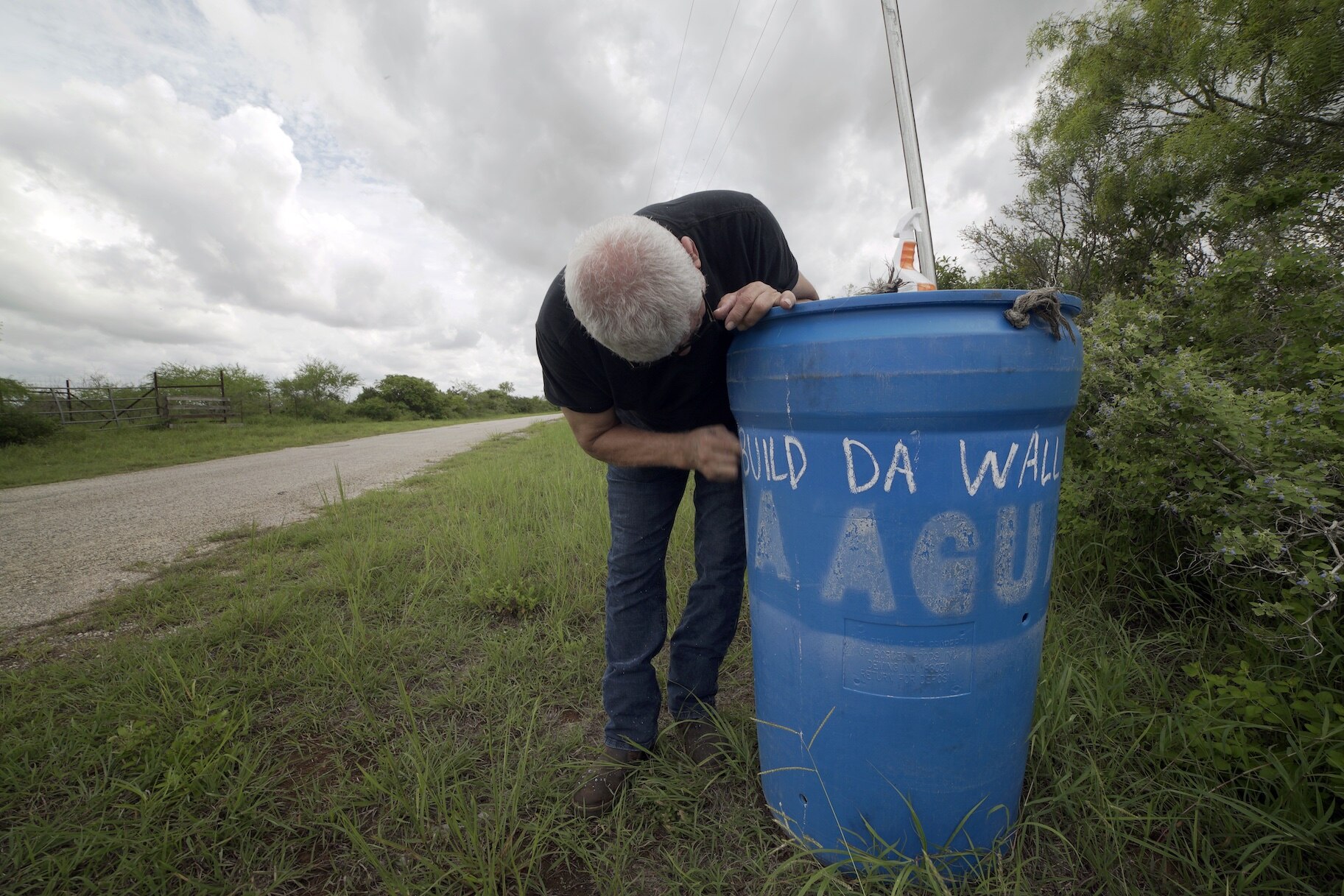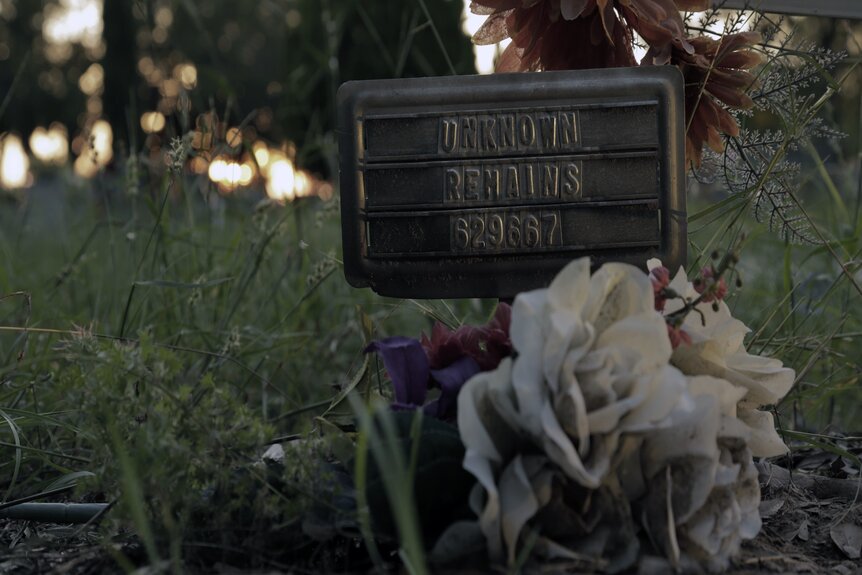Create a free profile to get unlimited access to exclusive videos, breaking news, sweepstakes, and more!
"Missing In Brooks County" Takes Harrowing, Apolitical Look At The Deadly Migrant Crisis
A new documentary film from PBS eschews politics in favor of humanity as it takes a 360-degree view of the ongoing migrant disaster in Texas’ poorest county.

On a hot and sunny day in Texas, Eddie Canales was hard at work doing his regular runs across Brooks County. Beneath tall Red Cross flags across the vast ranch land, he restocked bottles in the blue water stations he set up and maintains. At one point he smelled animal decay. Then he noticed, in the distance, a gathering of buzzards and vultures. Canales and the two guests he’d brought on the water run quickly finished the round and headed over in his pickup truck to the area. When they reached a clearing of brush beneath a tree they found the blackened, decaying corpse of a migrant who had died in the unforgiving and desolate terrain.
Canales, a Lone Star State native son and career organizer who now works to prevent migrant deaths with his advocacy group, Texas Center For Human Rights, is visibly shaken in this gut-wrenching moment, which makes up some of the first minutes of the new PBS documentary “Missing in Brooks County,” from filmmakers Jeff Bemiss, Lisa Molomot and Jacob Bricca. The film looks at the stark reality in one of the poorest counties in Texas, which local Sheriff Benny Martinez has said has been bankrupted by the cost of managing the corpses of the men, women and children found after they died attempting to cross into the county on foot; for years now, Brooks County has been referred to as Death Valley for migrants. The unmarked graves and flattened corpses that are seen throughout the film justify that nickname.
“The weather causes deaths; the heat causes deaths; the terrain causes death,” Canales said in an interview with Oxygen.com this week. “The length of time that they're there — they're walking to another pickup point — that also causes death.”
This migrant death disaster in Brooks County was amplified soon after a national 1994 deterrence policy led to the installation of a Border Patrol interior checkpoint on US 281. This forced migrants, hoping to reunite with family, and find better, safer lives, to pay smugglers to drop them directly into the county’s 40 miles of treacherous ranch land and attempt to cross over on foot and avoid the checkpoint — also the biggest employer in Brooks County.
The documentary’s co-directors estimate that 20,000 people have died in the county since 1994. But an exact figure of the men, women, and children who have died trekking through the harsh terrain, roughly 80 miles inland from the border, is plainly unknowable. Disconnects between county departments as well as missing records and statistics on those found on Brooks County's many ranches have created what a forensic anthropologist who appears in the film calls a “mass disaster.”
“We wanted to put a number in the film of how many people have died in the process of crossing the border since [1994 immigration policy] Prevention Through Deterrence, '' Molomot told Oxygen.com. "But there is no number. Part of the reason is that so many people are missing… it really made me think, 'why don't we know this number — like any other mass disaster that has happened?'”
In its circular view of the ongoing migrant disaster, the documentary, which was shot over four years and expertly edited in three, follows the U.S. Border Patrol Sheriff Martinez, anthropologists, and activists, but its real thrust is the search for Homero Roman and Juan Maceda, two young men whose families are seen in a desperate hunt to locate them after losing contact when the men entered Texas. At 27, Roman had been deported to Mexico after a traffic stop; he was undocumented. Soon, he decided to brave the trip to the border again in order to return to his family. Maceda risked the journey after facing a common problem for young men in Mexico: poverty or entering the fold of Mexican gangs and cartels.
The torturous plight of these families — one of which reached out to the filmmakers as part of their long, thorough and heartbreaking search for a loved one — is delicately handled with keen attention to detail. But the film’s true feat may be its refusal to take a side politically over what has become one of the most polarizing issues in the country over the past few decades; rather, the film focuses on the humanity and lives of those mired in this catastrophe. The result is respectful to both the film’s subjects and its viewers.
“Ultimately, we wanted to treat the audience as intelligent and capable of making up their own mind about how they feel, what kind of border policies, and what kind of country they want to have,” Bemiss told Oxygen.com. “In order to make up your mind, you have to see, you have to witness what's going on — and we feel like that's what the film does.”
The filmmakers also decline to present tidy solutions to the tangle of problems across Brooks County and the border dilemma. However, Canales — whose water station program is the latest in his lifelong career as an activist for worker and community rights — has his own policy ideas, which he says will simply no longer allow people to die. The people who risk their lives to enter the country most often become America's frontline workers, he says, and in 2021 we have a labor market that desperately needs them.
“The problem is: under what condition are we letting workers in? I've been saying that for the last seven years,” he told Oxygen.com. “Let's regularize the worker. I'm not talking about an extensive legalization program or even a pathway to citizenship. The people can come to the border, they can identify themselves, you can do a background check, you can also require a bond that's not prohibitive. It also makes economic sense — everywhere you go, labor is needed. We're hiring."
“Missing in Brooks County'' is part of PBS’s Independent Lens series and is also streaming via the PBS app.















